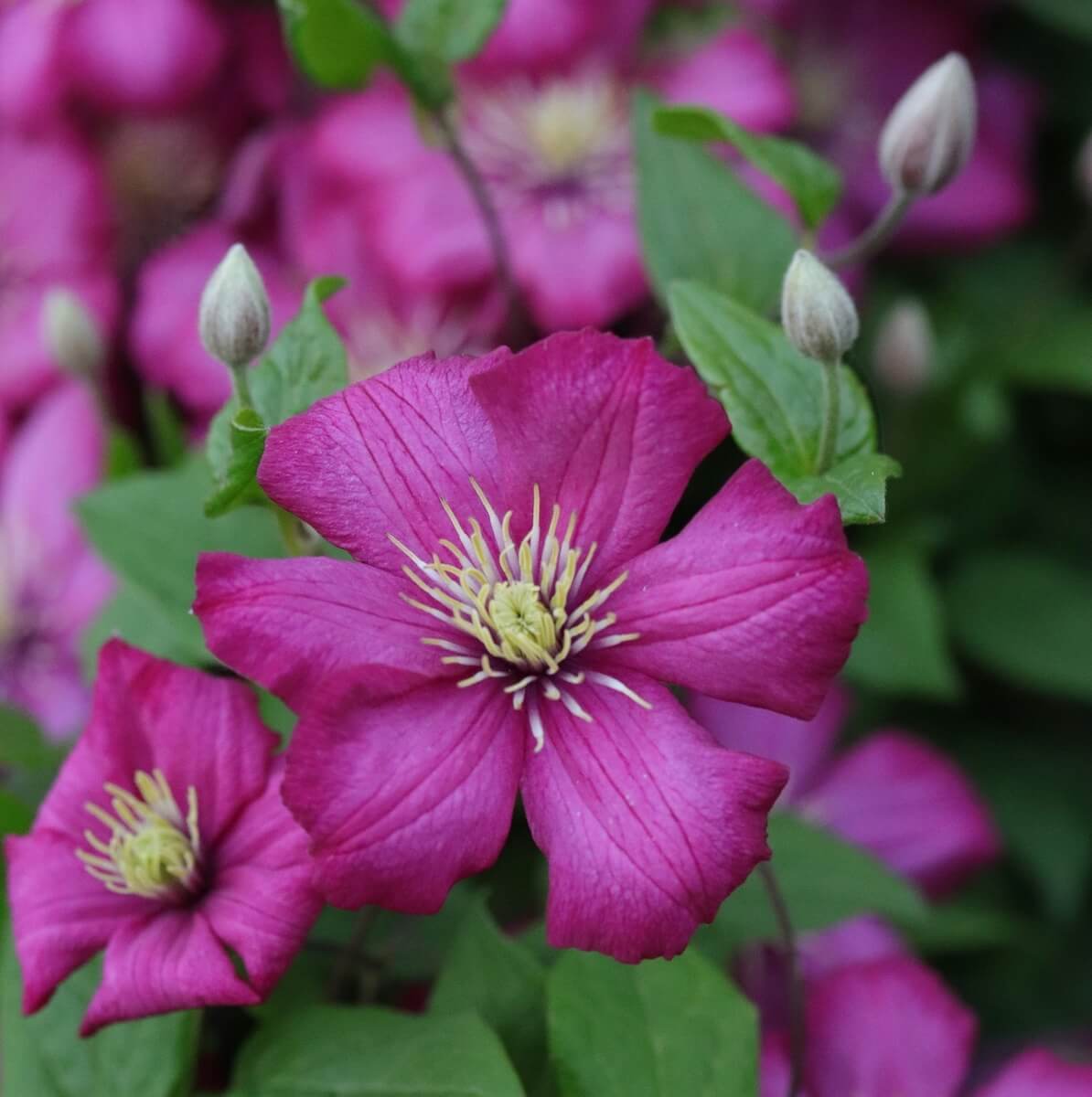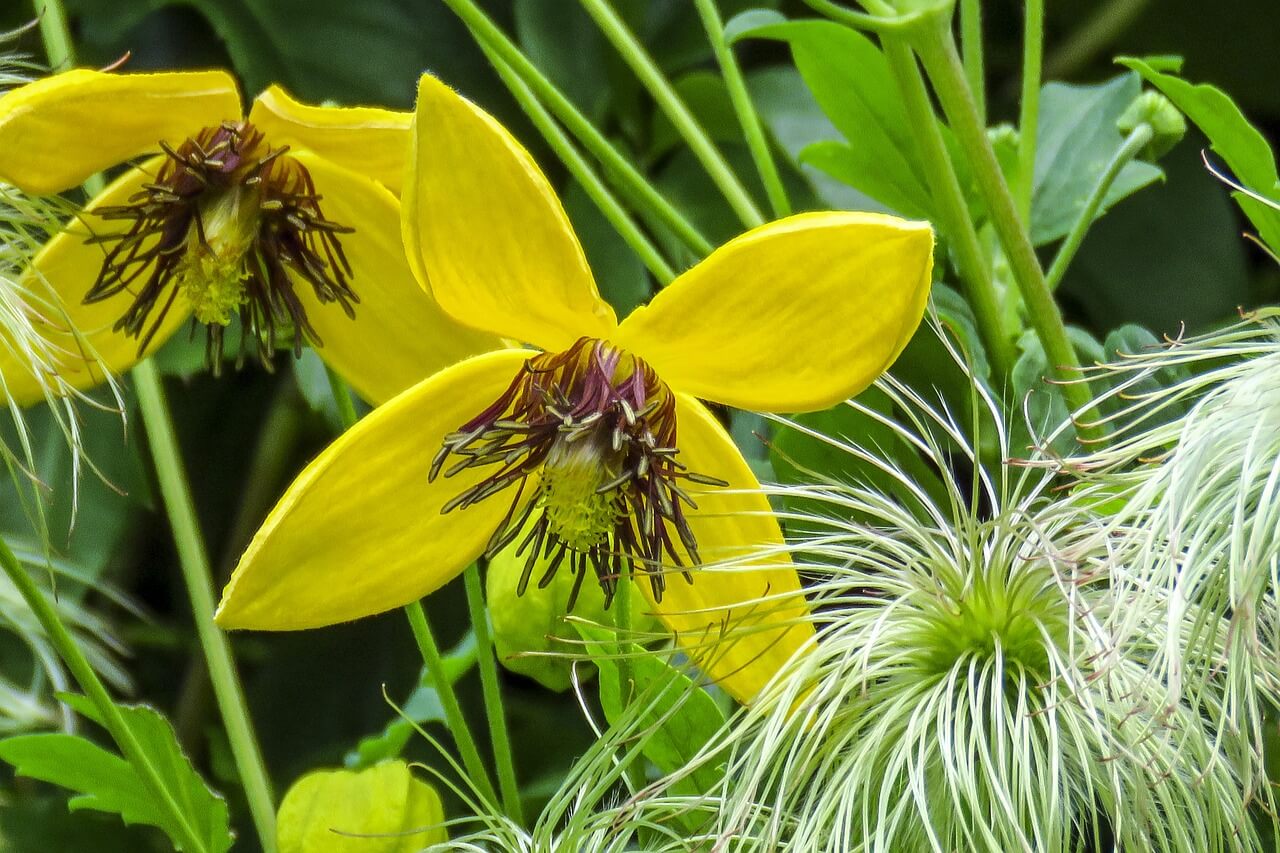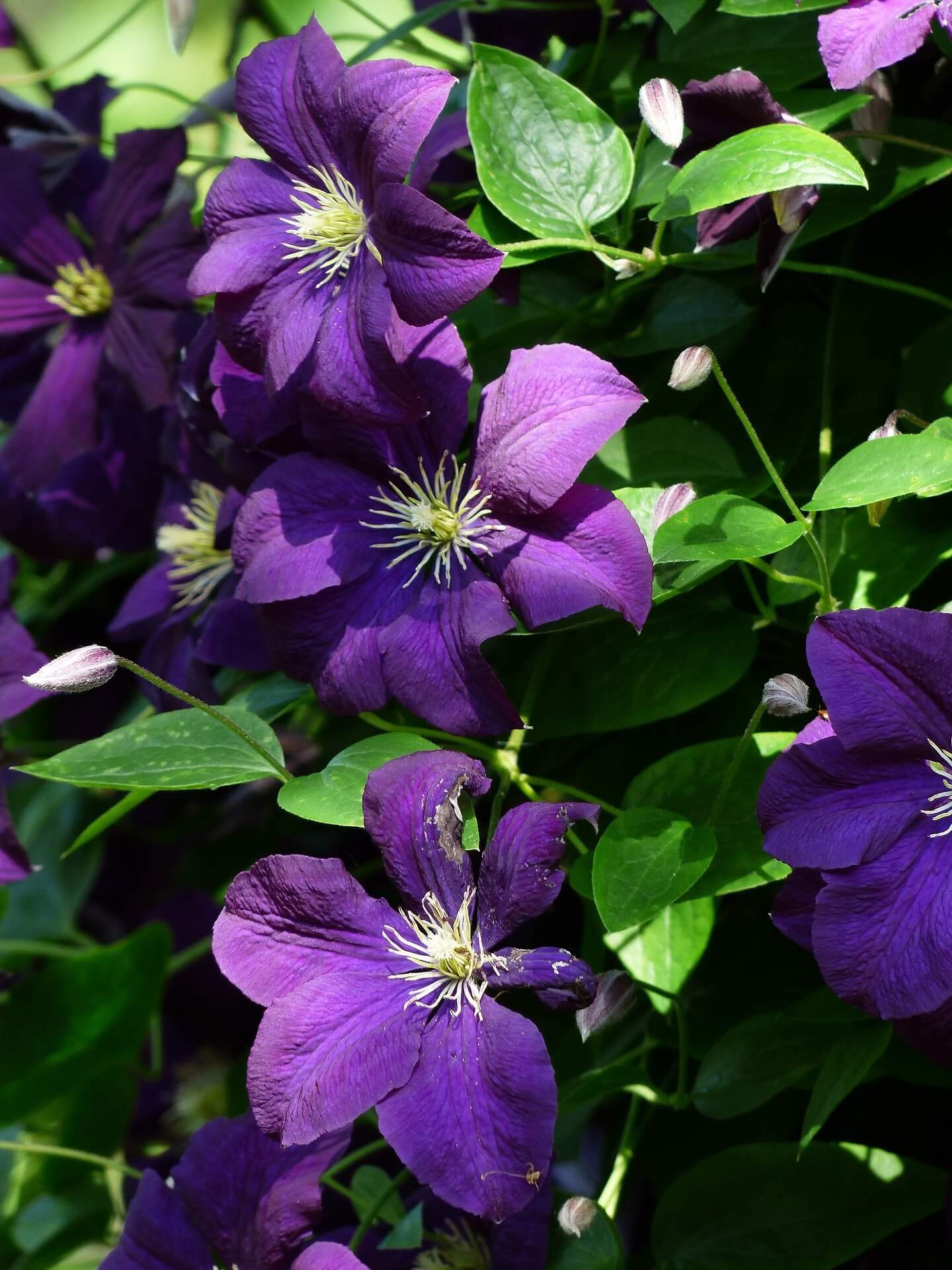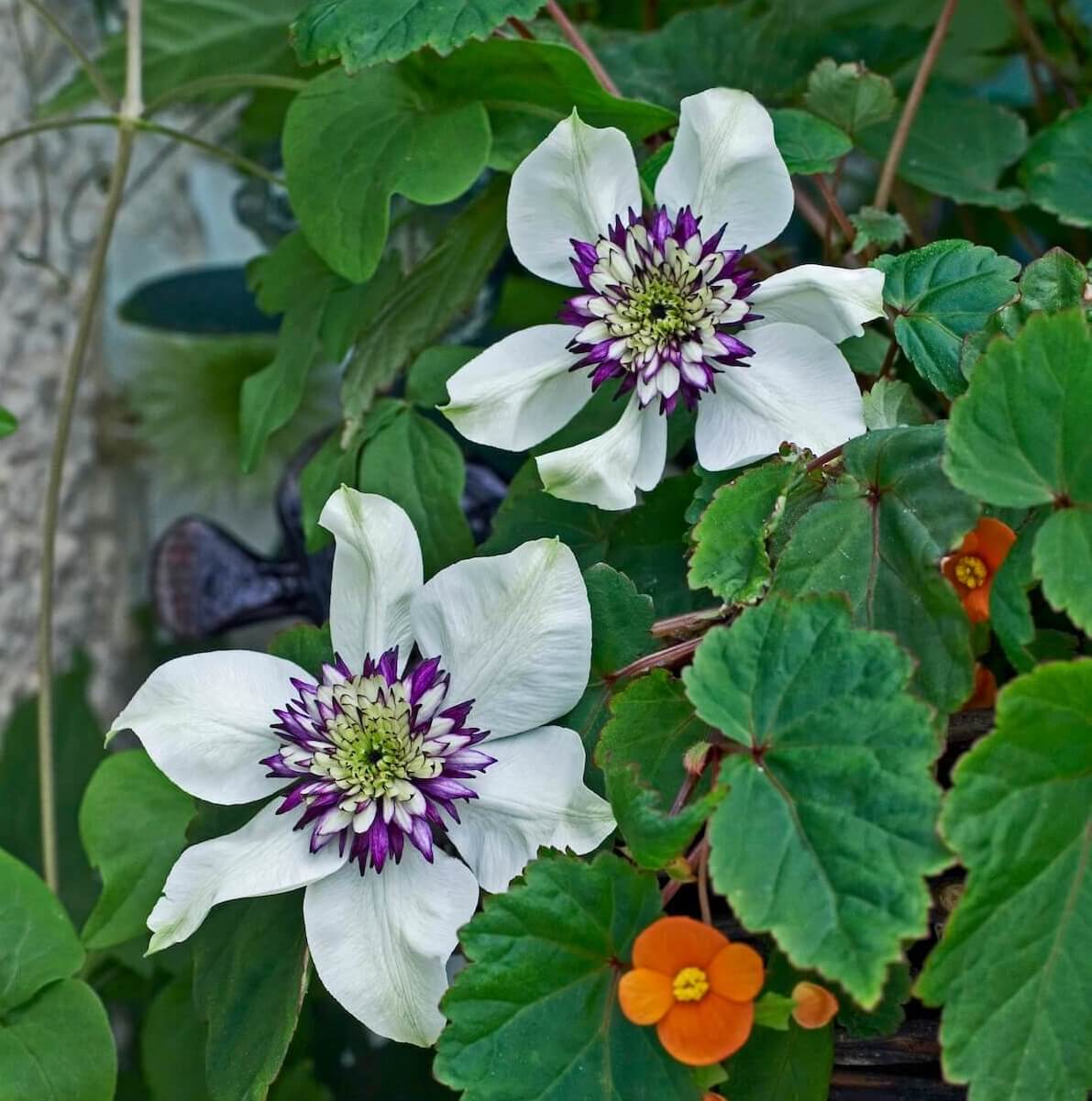Pruning Group 3 Clematis - A Complete Guide

The Basics of Pruning Group 3 Clematis
Pruning Group 3 Clematis is a straightforward process vital in keeping your plants healthy and flourishing. These clematis varieties bloom on new growth, so proper pruning helps encourage strong growth and abundant flowers. Whether growing a new variety or having an established plant, understanding how and when to prune can make all the difference.
This guide will walk you through the essentials of pruning Group 3 Clematis, as well as a list of popular varieties within this group. Let’s dive into how to get the most from these beautiful climbers.
Group 3 Clematis varieties are often referred to as the “late-flowering” clematis. This group typically blooms from mid-summer through to early autumn. Because they flower on new growth, pruning is essential to promote fresh growth and ensure a good display of blooms.
Before new growth begins, the best time to prune Group 3 Clematis is in late winter or early spring, usually around February to early March. This timing gives the plant ample time to recover and produce fresh growth for the flowering season.
How to Prune Group 3 Clematis
Here’s a step-by-step guide on how to prune your Group 3 clematis:
- Identify the Plant Structure
You can start by inspecting the plant to identify where last year’s growth ended and where new buds are beginning to form. You’ll want to remove the old, dead growth while preserving the fresh, new stems that’ll produce flowers this year. - Cut Back to Strong Buds
Group 3 Clematis should be pruned to a strong set of buds about 20-30cm (8-12 inches) from the ground. If no obvious buds are present at this height, prune back to 2 or 3 pairs of healthy buds, allowing for new growth. - Remove Dead or Weak Growth
While you’re pruning, remove any dead, damaged, or weak stems. These stems will not produce strong flowers and can drain the plant’s energy. - Tidy the Plant
Once you’ve cut the plant back to potent buds, please step back and take a look at its overall shape. Trim any additional stems that cross over each other or grow in an awkward direction. The aim is to create an open structure that allows sunlight and air to circulate the plant, thereby helping to prevent disease. - Tie-In Support
As Group 3 Clematis grows, it can become tangled and unmanageable without support. Use soft ties to secure the main stems to a trellis or other support structure, helping the plant grow upright and in the desired direction.
Following these steps will keep your Group 3 Clematis plants healthy and encourage vigorous flowering throughout the summer and autumn.


The Benefits of Pruning Group 3 Clematis
Pruning Group 3 Clematis is essential for several reasons:
- Promotes More Blooms
By pruning back to healthy buds, you’re encouraging the plant to produce new growth, which leads to more flowers later in the season. If you leave the plant unpruned, it may produce fewer flowers, and those it does produce might be smaller or less vibrant. - Encourages Healthy Growth
Regular pruning helps remove weak or dead stems, preventing disease and encouraging healthier, stronger growth. - Improves Plant Shape
Without pruning, Group 3 Clematis can become unruly and tangled. By cutting it back each year, you can maintain a neat, manageable shape and keep it from overwhelming its support structure. - Prevents Disease
Pruning opens up the plant, allowing for better air circulation, which helps reduce the risk of fungal diseases such as clematis wilt.


Popular Varieties in Group 3 Clematis
Many beautiful varieties of Group 3 Clematis can add colour and texture to your garden. Here are some popular options to consider:
- Clematis ‘Jackmanii’
One of the most well-known Group 3 varieties, ‘Jackmanii’, produces large, deep purple flowers from midsummer to early autumn. - Clematis ‘Polish Spirit’
This variety is known for its vigorous growth and abundance of dark violet flowers. - Clematis ‘Ville de Lyon’
With its striking pinkish-red blooms, ‘Ville de Lyon’ adds colour to any garden. - Clematis ‘Rouge Cardinal’
This variety produces bold, crimson-red flowers and is a favourite for creating a vibrant garden display. - Clematis ‘Prince Charles’
Known for its smaller but plentiful lavender-blue flowers, ‘Prince Charles’ blooms later in the season, from mid to late summer. - Clematis ‘Madame Julia Correvon’
This clematis produces lovely, wine-red flowers that stand out in any garden. - Clematis ‘Ernest Markham’
‘Ernest Markham’ features striking magenta-red blooms with a velvety texture. - Clematis ‘Huldine’
A more delicate-looking variety, ‘Huldine’ produces semi-nodding, white flowers with a hint of lavender. It blooms from midsummer to autumn and creates a soft, elegant display. - Clematis ‘Purpurea Plena Elegans’
This variety offers clusters of double, purple-red flowers that bloom from mid-summer to early autumn. It’s a vigorous grower and perfect for covering walls or trellises. - Clematis ‘Perle d’Azur’
This clematis showcases large, sky-blue flowers with a hint of lavender, blooming from midsummer to early autumn. It’s an excellent climber for walls and pergolas, offering a soft, calming display of colour. - Clematis ‘Comtesse de Bouchaud’
Known for its pastel pink blooms, ‘Comtesse de Bouchaud’ adds a touch of elegance to any garden. It flowers profusely from midsummer to early autumn and is ideal for trellises, fences, or scrambling through shrubs.
Conclusion
Pruning Group 3 Clematis is essential to ensure a healthy, vibrant plant and an abundance of blooms throughout the summer and autumn. By pruning back hard each year, you’re encouraging fresh growth that will reward you with stunning flowers later in the season. Remember to prune down to healthy buds in late winter or early spring, and remove any dead or weak stems.
Whether you’re growing ‘Jackmanii,’ ‘Polish Spirit,’ or another beautiful variety, these clematis plants will thrive with regular pruning and care. So grab your secateurs and enjoy the rewards of a well-pruned clematis!
Check out the RHS guide on pruning group 3 Clematis here.
For more information on Clematis, please click here.
Pruning Clematis
Pruning clematis properly is key to encouraging strong growth and beautiful flowers. This guide covers each clematis group in detail to help your plants flourish. Whether you’re just starting or need a refresher, click the link to discover when and how to prune for the best results. Done right, you’ll be rewarded with eye-catching blooms year after year! Click Here
Pruning Group 1 Clematis: A Complete Guide
Pruning Group 1 clematis encourages vigorous growth and plentiful early blooms. These varieties need only light trimming after flowering. With the right approach, you’ll keep them neat and thriving without much effort. In this article, we’ll show you how to manage Group 1 clematis step-by-step. Click the link to learn more and bring out the best in your plants! Read More
Pruning Group 2 Clematis: A Complete Guide
Pruning Group 2 clematis encourages multiple blooms and vigorous growth. Our guide covers when and how to prune these mid-season flowering plants for optimal results. Click the link to discover the best timing and techniques to get the most from your clematis. It’s easy to follow and helps keep your plants healthy and attractive! Read More


